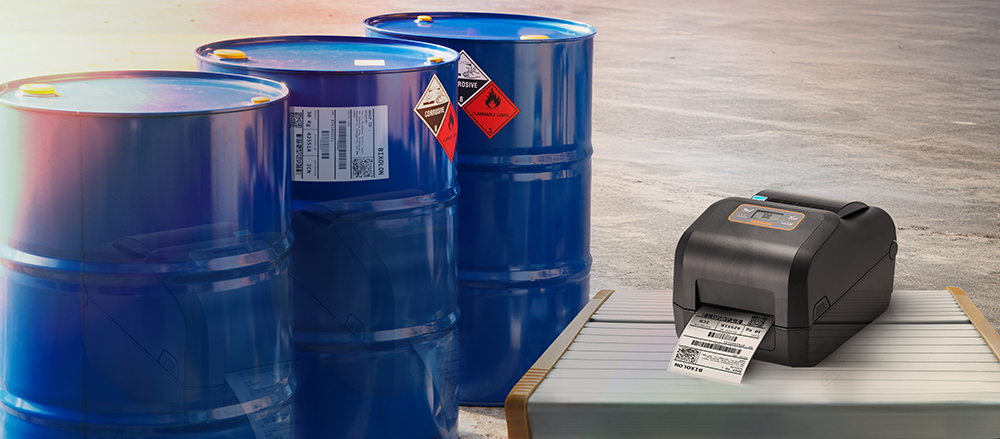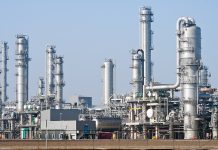By James Hamilton, Global Engineering Manager at Hughes Safety Showers
In industries where exposure to harmful chemicals and dust is a daily occurrence, the importance of workplace safety cannot be overstated. Every year in the UK, approximately 13,000 deaths are attributed to past exposure to hazardous substances, highlighting the devastating health risks faced by workers.
While attention is often focused on personal protective equipment (PPE) and hazard control systems, one aspect is frequently overlooked: the need for proper safety showers and decontamination facilities. This may be due to vague workplace safety guidelines with terms like “hygiene facilities” and “washing stations” being too broad. This lack of clarity can suggest that standard sinks and showers are suitable for tackling exposure to harmful substances.
Safety showers play an essential role in minimising the health impact of hazardous exposure through quick and effective decontamination.
Health Risks from Insufficient Facilities
The risks posed by exposure to hazardous chemicals in the workplace can cause immediate injuries or discomfort. Inadequate safety measures, including the absence of decontamination facilities such as safety showers, can significantly increase the risk of health issues such as burns and other skin conditions.
When workers are exposed to hazardous substances – whether through spills, splashes or airborne particles – immediate action is critical to prevent prolonged exposure. However, if the necessary first-aid facilities are unavailable, the harmful chemicals can cause further damage by continuing to penetrate the skin or enter the body. Prolonged exposure means the chemicals stay on the skin longer, increasing the likelihood of burns, rashes and more severe issues.
Furthermore, the lack of safety showers can make it more challenging to provide immediate care. Even if PPE is used correctly, the possibility of contamination still exists. Without adequate facilities, workers remain at risk of serious health complications, and businesses increase their liability for potential workplace injury claims.
The impact of chemical exposure extends beyond the individual worker. It can also result in regulatory violations, lawsuits and reputational damage to the business. Companies that fail to provide sufficient decontamination facilities may find themselves facing legal action for negligence. It is, therefore, in the best interest of both employees and employers to invest in robust hygiene and safety infrastructures that can prevent such risks from being a reality.
Hygiene Showers vs Safety Showers
Understanding the distinction between hygiene showers and safety showers is important for ensuring proper worker protection in environments where hazardous substances are handled. Although hygiene showers and safety showers serve different purposes, both are integral to maintaining a safe and healthy workplace.
Hygiene Showers
Hygiene showers are primarily intended for maintaining personal cleanliness and hygiene in the workplace and are often located in staff changing rooms. These showers are typically used to remove non-toxic substances, such as dust, dirt and other irritants that can accumulate on the skin and clothing.
In environments where workers are exposed to substances that are not immediately harmful but can cause irritation or discomfort, hygiene showers offer a way to maintain general cleanliness and minimise potential skin conditions.
These showers are also useful for situations where workers may have come into contact with mild irritants, such as oils, paints and other non-toxic chemicals.
The design of a hygiene shower generally focuses on providing a gentle water flow for thorough rinsing of the body and clothing. While they are an essential part of workplace cleanliness, hygiene showers are not equipped to handle the removal of hazardous materials that pose a significant risk to health if left on the body for too long.
Safety Showers
On the other hand, safety showers are specifically engineered for emergencies where there has been direct exposure to hazardous chemicals, acids or other toxic substances. In these cases, immediate action is necessary to prevent severe injury.
Safety showers are designed to provide a high flow rate of water capable of effectively flushing large amounts of water over the body to remove dangerous substances. The water velocity must be low enough to prevent further injury to the user.
They should be installed within 10 seconds reach of hazardous areas in laboratories, chemical plants and manufacturing facilities, as is recommended in regulations such as EN15154 Parts 2 and 5 for Europe and ANSI Z358.1-2014 internationally.
Tepid water, typically ranging from 16-38⁰C, is an important feature of safety showers. It is ideal because it allows users to remain under the water flow for at least 15 minutes without causing shock, scalding or worsening chemical burns. Cold or extremely hot water can worsen injuries by constricting blood vessels or causing additional skin damage.
These showers are designed to provide fast, effective decontamination and are often accompanied by eyewash stations for immediate eye protection in case of chemical splashes. The emphasis with safety showers is on speed and efficiency by rapidly flushing contaminants away before they can be absorbed into the skin or cause serious damage.
In the chemical industry where exposure to hazardous materials is a daily risk, the importance of hygiene and safety showers cannot be overstated. While hygiene showers help maintain cleanliness and prevent irritation from non-toxic substances, safety showers are vital for emergency decontamination. By prioritising these essential facilities, businesses can protect their workers from both immediate and long-term health risks.











